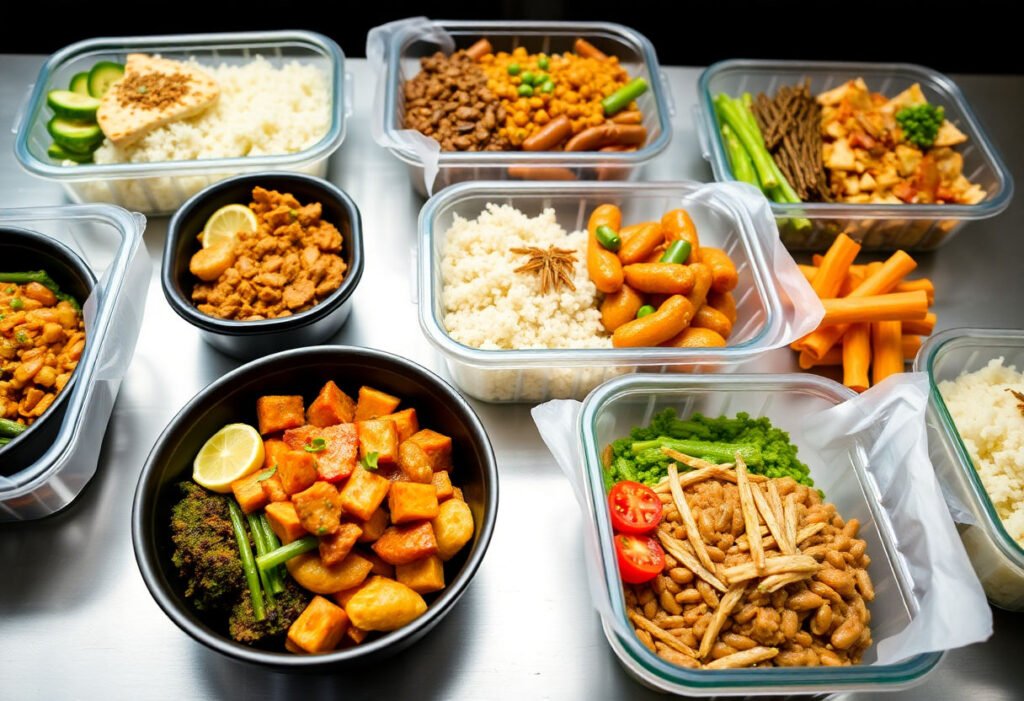In today’s fast-paced world, Asian meal prep presents an engaging and efficient way to infuse your weekly menu with variety, flavor, and nutritional balance. This culinary approach not only offers a delightful exploration of authentic Asian flavors but also aligns seamlessly with modern lifestyles, prioritizing both health and convenience. As you delve into the rich tapestry of spices and ingredients unique to Asian cuisine, you’ll discover how this method can transform your meal planning endeavors. This article will provide a roadmap to mastering Asian meal prep, ensuring your weekly routine becomes an exciting and nourishing culinary journey.
Key Takeaways
- Asian meal prep offers a variety of dishes that focus on vibrant flavors and nutritional balance, making it ideal for a healthy lifestyle.
- Incorporating versatile Asian ingredients and spices can add depth and complexity to your weekly menu without compromising on ease of preparation.
- Developing a balanced meal plan rooted in Asian culinary principles ensures a harmonious combination of proteins, vegetables, and grains.
- Investing in efficient meal prep strategies and proper storage techniques preserves the freshness and enhances the taste of your Asian dishes.
- Personalizing your meal prep with Asian cuisine provides an opportunity to enjoy diverse flavors while reaping substantial health benefits.
Understanding Asian Flavors and Ingredients
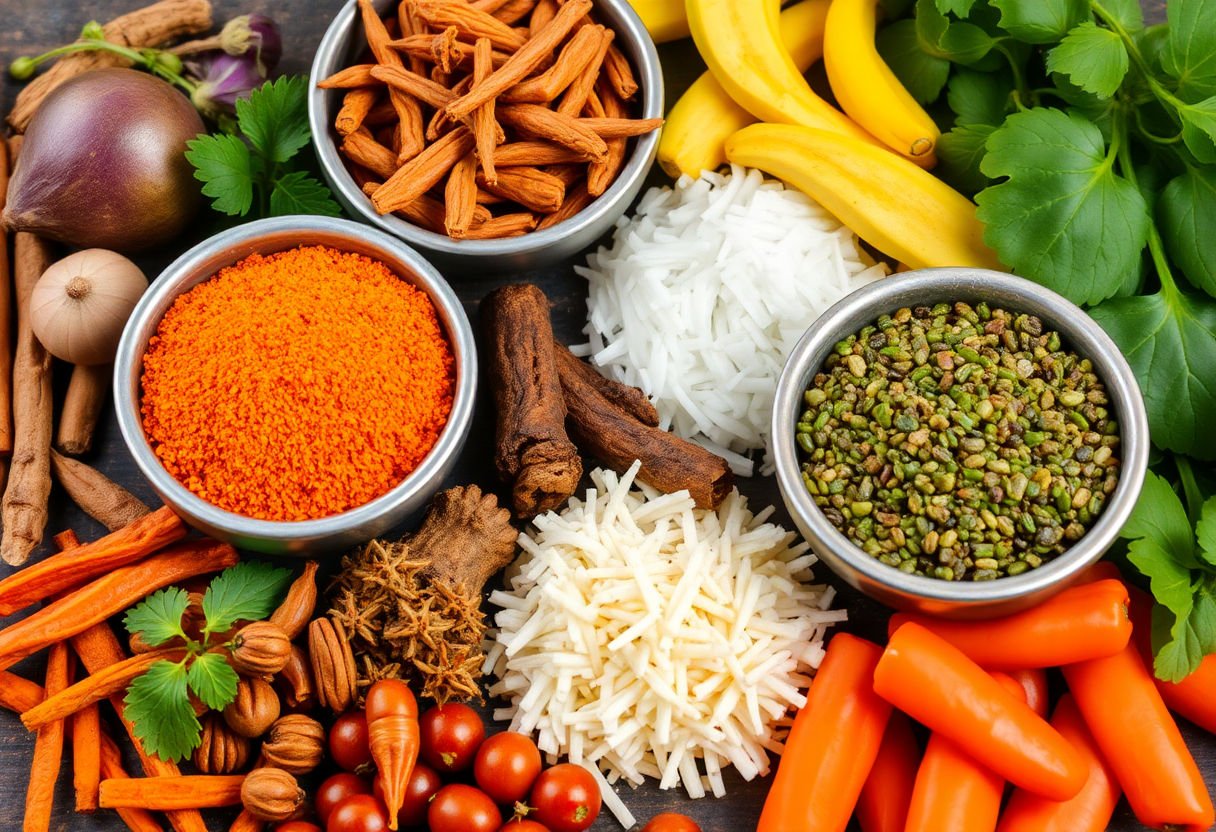
Asian cuisine is renowned for its intricate blend of flavors and ingredients, creating complex taste profiles that delight the senses. To master Asian meal prep, familiarizing oneself with these essential components is crucial.
Essential Asian Flavors: At the heart of Asian cooking are the five basic tastes: sweet, sour, salty, bitter, and umami. For example, soy sauce introduces a rich umami taste, complementing a variety of dishes, while lime juice or vinegar adds a refreshing sourness that balances spicy flavors often found in Thai and Vietnamese cuisine. Incorporating these tastes in your meal prep can result in dishes that are both flavorful and satisfying.
Common Spices and Seasonings: The allure of Asian dishes frequently lies in their spices. Ingredients such as ginger, garlic, and chili peppers are foundational, providing aromatic depth and a hint of heat. Turmeric and coriander are often used in Indian and Southeast Asian cooking, imparting vibrant color and distinct taste. A small dash of sesame oil can enhance the nuttiness of your preparations, especially in Korean and Chinese dishes.
Staple Ingredients: A successful Asian meal prep often includes versatile staples like rice, noodles, tofu, and a variety of vegetables. Rice—whether jasmine, basmati, or sticky—is a unifying element in many Asian cultures, forming the base of countless meals. Noodles are equally versatile, ranging from soothing soups to stir-fried delights. Including tofu in your meals not only adds a source of protein but also adapts well to diverse flavors and styles of cooking, making it ideal for vegetarian options.
Incorporating these flavors and ingredients into your weekly meal prep will offer both culinary diversity and nutritional balance, enhancing each meal’s appeal without compromising health benefits.
Creating a Balanced Asian Meal Plan
Creating a balanced Asian meal plan involves a thoughtful integration of various ingredients and traditional cooking methods to ensure nutrition, flavor, and culinary satisfaction. One of the fundamental principles of Asian cuisine is the balance between different tastes and textures in each meal. This can be achieved by incorporating a variety of vegetables, lean proteins, whole grains, and heart-healthy fats.
Understanding Meal Structure
Asian meals traditionally emphasize balance between the five essential flavors: salty, sweet, sour, bitter, and umami. For instance, a meal might consist of a savory tofu stir-fry enriched with vegetables such as bok choy and bell peppers for a spectrum of taste and nutrients. Rice or quinoa can be added as a staple carbohydrate base.
Incorporating Protein
Lean proteins like fish, chicken, tofu, and legumes are crucial components. They provide essential amino acids and help support muscle repair and growth. Consider a dish like miso-glazed salmon, which merges flavor and nutrition, or tofu seasoned with a simple soy sauce marinade.
Selecting Healthy Sides
Vegetables play a prominent role, offering nutrients, fiber, and a satisfying crunch. Opt for seasonal produce such as broccoli, carrots, eggplant, or snap peas. Blanching or steaming these vegetables can retain their vibrant colors and nutrients. Adding a seaweed salad could introduce a unique texture and further enhance the meal’s nutritional profile.
Diversity through Cooking Methods
Diverse cooking techniques such as grilling, steaming, and stir-frying allow for variety while preserving the natural flavors of ingredients. While frying can impart a rich taste, using less oil and opting for healthier fats like sesame or avocado oil can make meals heart-friendly.
By integrating these elements thoughtfully, one can create an Asian meal plan that is not only nutritionally balanced but also diverse and flavorful, satisfying both the body’s needs and the palate’s desires.
Top Asian Meal Prep Recipes for Beginners
Embarking on the journey of Asian meal prep can be a delightful experience, especially for beginners. This section introduces simple yet delicious recipes that are not only easy to prepare but also rich in flavors and nutrients that represent the diversity of Asian cuisine.
Start with a classic Chicken Teriyaki, a staple that embodies the perfect balance of sweet and savory. Marinate chicken breast with soy sauce, mirin, and sugar, then grill or stir-fry until cooked through. Serve over steamed rice with a side of quickly stir-fried vegetables like bell peppers or broccoli for a complete meal.
Another beginner-friendly recipe is Thai Green Curry with Tofu. This dish offers a mild yet aromatic experience. Simmer tofu cubes with green curry paste, coconut milk, and seasonal vegetables such as zucchini and eggplant. Garnish with fresh basil leaves and serve with jasmine rice for an authentic taste.
For a speedy and nutritious option, try making a Vegetable Fried Rice. Use day-old rice, which is crucial for achieving the right texture. Sauté a mix of your favorite vegetables—such as carrots, peas, and scallions—with a dash of soy sauce and a sprinkle of sesame oil. Top it off with scrambled eggs or tofu for added protein.
These recipes not only highlight the ease and satisfaction of Asian meal prep but also emphasize the adaptability of these dishes to suit individual tastes and dietary needs. By starting with these foundational recipes, beginners can gradually explore more complex flavors and techniques with confidence.
Tips for Efficient Meal Prep
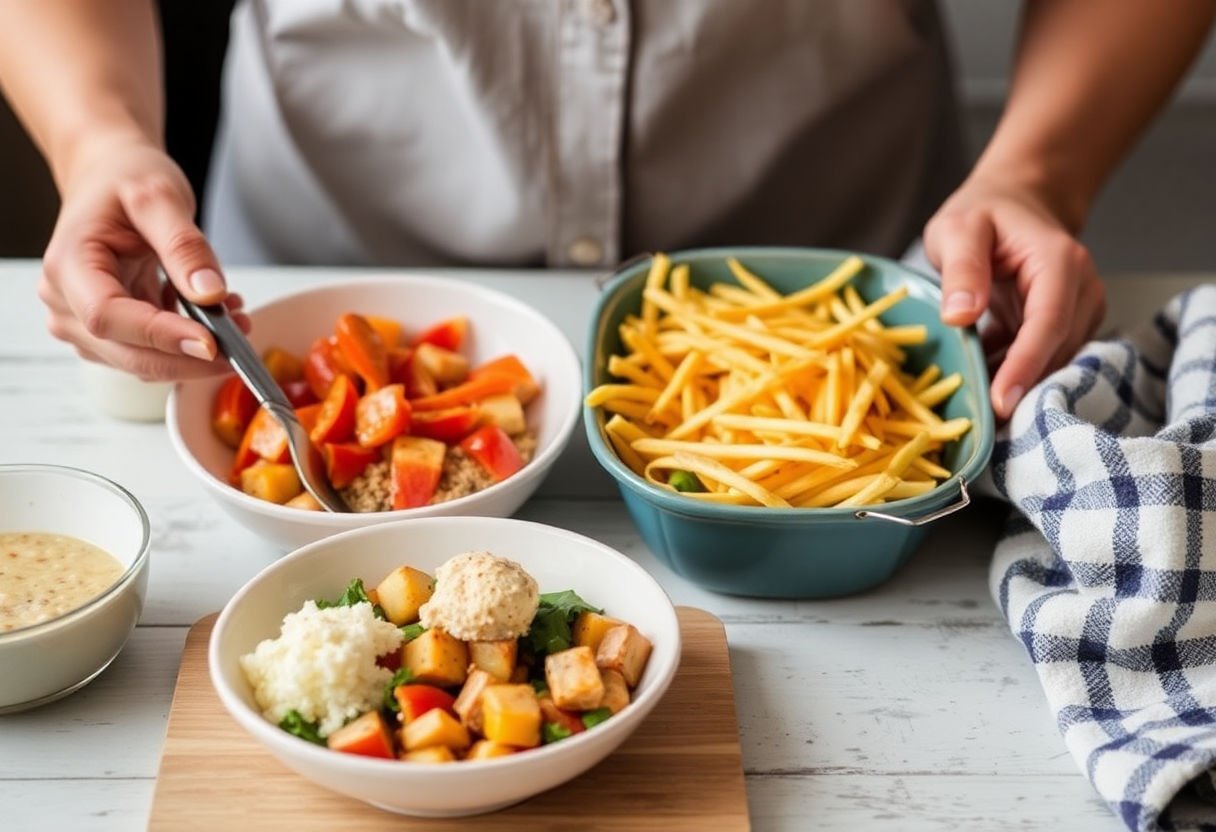
To streamline your Asian meal prep process, start by organizing your kitchen workspace for maximum efficiency. Preparation begins before you start cooking. Ensure that your pantry is stocked with essential Asian staples such as soy sauce, sesame oil, and rice vinegar. Having these ingredients on hand saves you time and helps maintain a consistent flavor profile across different meals.
Another powerful tip is to batch cook versatile components. For instance, prepare a large pot of steamed rice, which can serve as a side or be transformed into fried rice later in the week. Similarly, marinate proteins like chicken, tofu, or beef in common Asian marinades, then cook them in large quantities. This approach reduces daily meal prep time significantly.
Investing in quality storage containers is crucial for an efficient meal prep routine. Use leak-proof glass or BPA-free plastic containers, ensuring they’re microwave and freezer safe. This not only preserves the flavors and textures of your dishes but also facilitates easy reheating when you’re ready to eat.
Moreover, leverage the power of a weekly meal prep schedule. Plan your menu by grouping dishes with similar ingredients or cooking methods. For example, if you’re preparing a Thai curry, a Vietnamese pho, and a Japanese stir-fry, each dish might require chopping similar vegetables, which can be done simultaneously to save time.
Finally, don’t overlook the importance of flexibility in portion sizes. If you’re uncertain about how much to prepare, cook in larger batches and freeze portions for later. This way, you have backup meals ready for unexpected busy days, maintaining the balance and flavor of your weekly menu.
Storing Your Asian Meal Prep Dishes
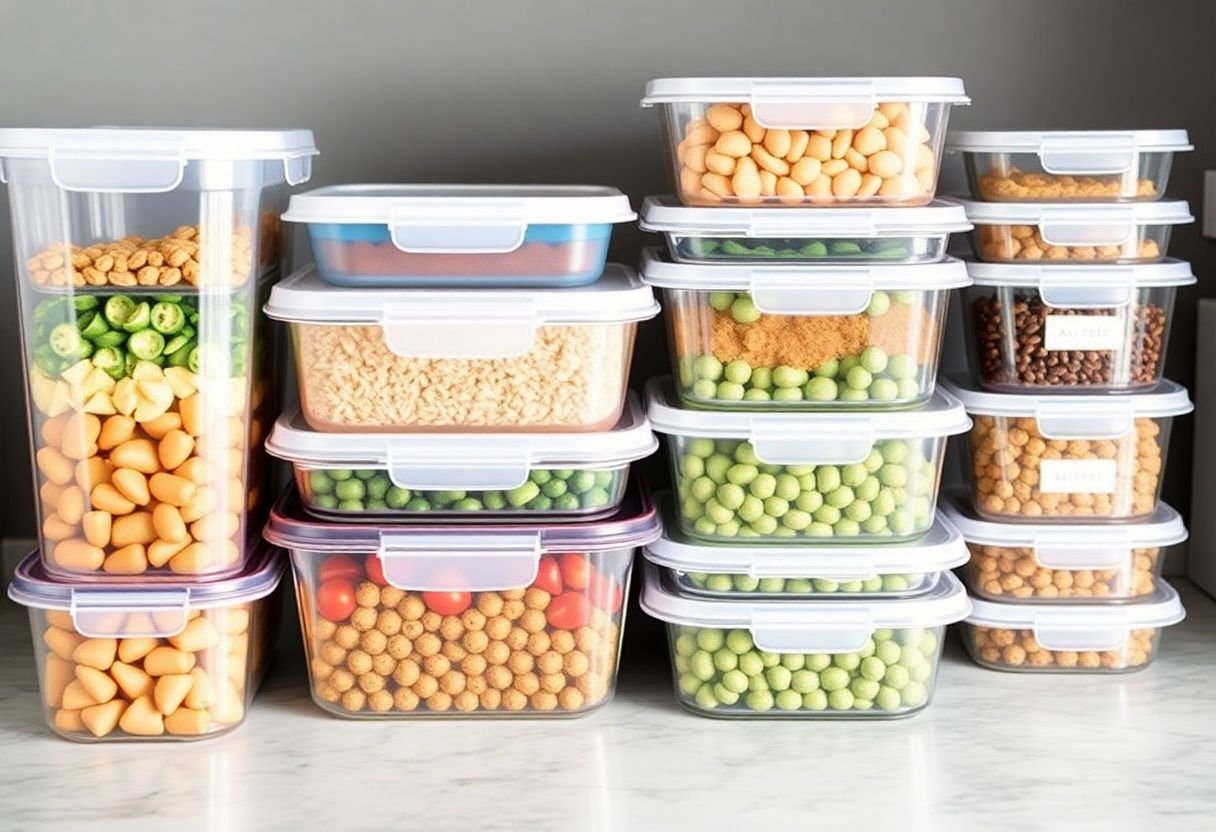
Proper storage of your Asian meal prep dishes is crucial for maintaining freshness and preserving the intricate flavors that Asian cuisine is celebrated for. To maximize the shelf life of these meals, begin by allowing them to cool to room temperature before storing. This prevents moisture buildup, which can degrade both texture and taste.
Use airtight containers to lock in the aromas and flavors. Glass containers are preferable as they do not absorb odors and are suitable for both refrigerator and freezer storage. For dishes with sauces or broths, ensure the containers are filled with a minimal amount of air space to reduce oxidation and freezer burn. For added convenience, consider using containers with divided compartments to separate different components, maintaining their distinct flavors.
Label your containers with the date and name of the dish. This simple practice assists in meal organization and ensures that older meals are consumed first. Typically, Asian dishes like stir-fries, curries, and rice bowls can be stored in the refrigerator for up to four days and in the freezer for up to three months.
When reheating, use the stovetop or microwave. Ensure that the food reaches a safe internal temperature of 165°F (74°C) to preserve food safety standards. If using a microwave, cover the dish loosely to prevent moisture loss.
Incorporate these storage tips into your meal prep routine to enjoy your Asian-inspired dishes at their finest, ensuring they remain both safe and delectable throughout the week.
Customizing Your Weekly Menu
When diving into the art of meal preparation, customizing your weekly menu can be a delightful journey of flavors. With Asian cuisine at your fingertips, the array of options ensures that your meals never become mundane. Here are a few ways to tailor your weekly menu with varied Asian dishes, enhancing both taste and nutrition.
Embrace Diversity in Ingredients: Incorporate a colorful assortment of vegetables like bok choy, bell peppers, and carrots, which not only add vibrant hues to your plate but also contribute to a balanced diet rich in vitamins and minerals.
Mix Different Cuisines: Drawing inspiration from various Asian regions can introduce novel flavors. For example, pair a Japanese miso soup with a Thai green curry. This fusion not only broadens your palate but also provides a rich tapestry of tastes.
Focus on Seasonal Produce: Utilizing produce that is in season can enhance the freshness and flavor of your meals. Fresh herbs like cilantro and basil, available during summer months, can elevate your dishes with minimal effort.
Balance Proteins and Carbohydrates: Personalize your protein options by incorporating tofu, tempeh, chicken, or fish. These can be paired with whole grains like brown rice or quinoa for a meal that satisfies and sustains.
Adjust Spice Levels: Tailor the heat in your meals by modifying the quantity of spices such as chili or ginger. This ensures that the flavors align perfectly with your personal preferences.
By intentionally selecting and alternating ingredients, your weekly menu becomes a reflection of both your tastes and nutritional goals, embodying the diverse and enticing nature of Asian cuisine.
Health Benefits of Asian Meal Prep
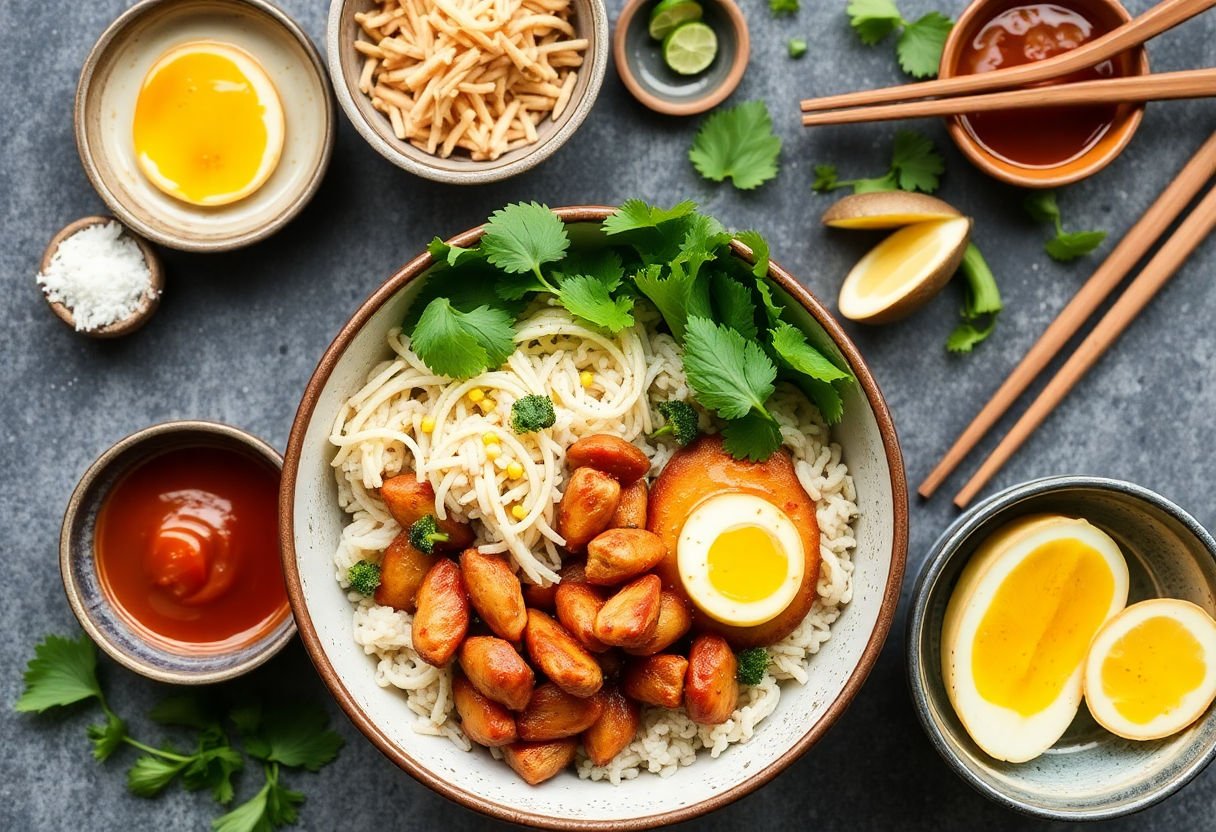
Asian meal prep offers a myriad of health benefits that cater to diverse nutritional needs while embracing a flavorful approach. At its core, Asian cuisine prioritizes balance and variety, incorporated through the harmonious use of ingredients such as vegetables, lean proteins, and whole grains.
A primary benefit is the enhancement of digestive health. Many Asian dishes incorporate fermented foods like kimchi and miso, which are rich in probiotics that support gut health. These ingredients not only aid digestion but also bolster the immune system, helping to prevent illness.
Asian meal prep typically emphasizes the use of abundant fresh vegetables and herbs, contributing to a high intake of vitamins, minerals, and antioxidants. Ingredients such as bok choy, edamame, and seaweed are nutrient-dense, promoting overall wellness and providing essential elements that support heart and brain health.
Furthermore, lean proteins like tofu, tempeh, and fish are staples in many Asian dishes. These protein sources are lower in saturated fats compared to red meats and can play a crucial role in maintaining a healthy weight and muscle mass.
An additional advantage lies in the judicious use of spices and herbs, which are not only flavor enhancers but also possess significant health properties. Turmeric, ginger, and garlic, commonly used in Asian recipes, are known for their anti-inflammatory and antioxidant effects, supporting cardiovascular health and reducing the risk of chronic diseases.
By integrating these nutritional principles, Asian meal prep offers a holistic approach to eating, ensuring that each meal is not only tasty but also contributes positively to long-term health outcomes.
Conclusion
Mastering Asian meal prep offers an enriching experience, combining variety, flavor, and nutritional balance into your weekly routine. By understanding essential Asian ingredients and flavors, and creating a balanced meal plan, you unlock the potential to transform your dietary habits. The health benefits and efficiency of meal prepping are undeniable, especially when strategic storage practices are applied. As you continue on this culinary journey, remember that customizing your menu is key to maintaining interest and achieving lasting results. Embrace the art of Asian meal prep and savor the artful fusion of taste and wellness in every bite.
Frequently Asked Questions
What are the main benefits of incorporating Asian meal prep into a weekly menu?
Asian meal prep provides a unique combination of flavor variety, nutritional balance, and time efficiency. By planning your meals ahead, you can enjoy diverse dishes that offer both health benefits and convenience.
Which essential ingredients should I always have on hand for Asian meal prep?
It’s important to stock up on soy sauce, rice vinegar, sesame oil, and a variety of spices like ginger and garlic. Having a selection of fresh vegetables and rice or noodles is also crucial for creating balanced meals.
Can Asian meal prep accommodate specific dietary needs?
Yes, Asian cuisine is versatile and can be easily adapted for various dietary preferences, including vegetarian, vegan, gluten-free, and low-carb diets. By choosing appropriate substitutes, you can maintain dietary restrictions without sacrificing flavor.
How long can Asian meal prep dishes be stored to maintain freshness?
Most Asian meal prep dishes can be stored in the refrigerator for up to four days. If you’re planning to keep them longer, consider freezing your meals, which can extend their shelf life to a few months without compromising taste or texture.
What are some simple Asian recipes perfect for meal prep beginners?
For newcomers to Asian meal prep, try starting with dishes like stir-fried vegetables, chicken teriyaki, or vegetable lo mein. These recipes are straightforward to prepare and provide a delicious introduction to the diverse flavors of Asian cuisine.
